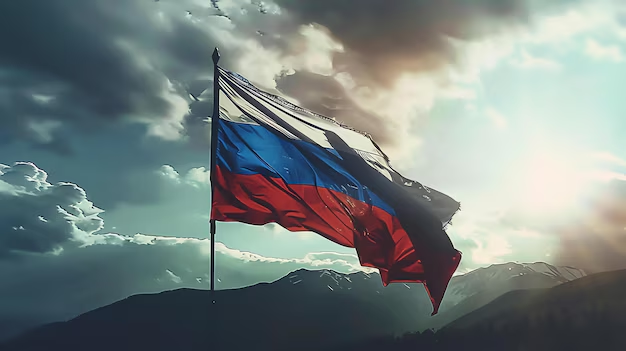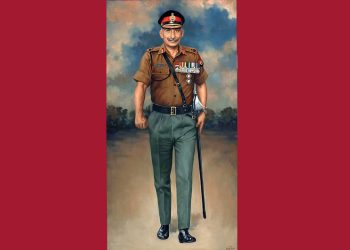The book The Last Colony: Muzaffarabad-Gilgit-Baltistan was edited by P. Stobdan and D. Suba Chandran and published by the India Research Press, Delhi. The book is a coalescence of eight research essays by noted scholars, including the editors. The book is a part of research activities concerning the intricacies of Pakistan-Occupied Kashmir by the Centre of Strategic and Regional Studies (CSRS) with the sponsorship of the Ministry of External Affairs, Government of India.
Since 1950, any discourse on Jammu and Kashmir has been dominated by the Kashmir issue. In all that noise, one place that is also an integral part of Jammu and Kashmir has always been neglected, i.e., Gilgit-Baltistan. There is ample literature and research on Jammu Kashmir and Pakistan-Occupied Kashmir (PoK), but there is hardly any research or literature on Gilgit-Baltistan. The thematic essays in the book shed light on the social, cultural, religious, linguistic, and geostrategic aspects of Gilgit-Baltistan.
As mentioned in the title, the Book aims to highlight the intricacies of Pakistan-Occupied Kashmir (PoK), especially Gilgit-Baltistan. The book also notes the political limbo that the Gilgit-Baltistan region faces vis a vis the rest of PoK or the so-called Azad Jammu and Kashmir as termed by Pakistan.
Cultural Heterogeneity and Sectarian Violence
The book’s first chapter, written by Professor P. Stobdan, highlights the heterogeneous nature of the Gilgit-Baltistan region. The region is occupied by people belonging to different ethnic groups, which are further divided into sub-ethnic groups and social castes. Professor Stobdan additionally touches upon the sectarian violence rife in the region. This theme is further discussed in the third chapter by D. Suba Chandran. Gilgit Baltistan has been rife with sectarian violence since 1982. The region has seen violence due to the majority of Shias, which the Pakistani establishment despises, and has actively enabled violence against the Shia sect. D. Suba states the 1988 violence where he quotes the International Crisis Report:
“For three days, they (the Sunni militants) killed, looted, and pillaged with impunity while the authorities set back and watched.”
Also notable is that the Pakistani establishment enabled the violence against the Shias and actively participated in it. D, Suba Chandran states that in May 1988, General Musharraf, then a Brigadier with the SSG, recruited several thousands of Sunni tribals from the Afghan borders and let them loose against the Shias.
Multitudes of factors can explain the sectarian violence in Gilgit-Baltistan. Among them is the Shia majority of the region. Another one is that the initiation of the violence coincided with the Afghan Jihad against the USSR, and it spread like wildfire to other regions under Pakistan’s control.
PoK: Jihad, Human Rights and Media
In Chapter 6, Global Perspectives on PoK, Mathew Joseph states how Pakistan has successfully projected India as an oppressor of the Kashmiri opinion and demands. Pakistan’s propaganda was amplified by the Western media that dominated international public opinion during the Cold War. Mathew Joseph states:
“The Cold War dynamics also made the international community to conveniently forget the non-existence of democracy and fundamental rights and the human rights violations in PoK which includes the “AJK and the Northern Areas.”
Chapter 2, Jihadi Groups in PoK: Post-earthquake Dynamics by Kanchan Lakshman, describes how PoK’s Western discourse came crashing down when foreign media and NGOs got access to PoK in the wake of the 2005 earthquake. Kanchan Lakshman quotes a report from Human Rights Watch, which begins with the quote of a resident of Muzaffarabad in PoK. The quote is:
“Pakistan says they are our friends, and India is our enemy. I agree India is our enemy, but with friends like these, who needs enemies?
This quote more than explains the human rights situation in PoK.
The 2005 earthquake also brought forth the state-terrorism confluence between Pakistan and Sunni terrorist groups such as Jaish-e-Mohammed, Lashkar-e-Toiba, Al-Badr, Hizb-ul-Mujahideen, etc. The NGOs and media saw that the state was completely missing from relief work, and PoK, especially Muzaffarabad, became a recruiting ground for these very organizations. The support for the terrorist organizations was so overt in the Pakistani establishment that the then interior minister of Pakistan, Aftab Khan Sherpao, acknowledged the role of Islamist groups and declared them as “lifeline of our rescue and relief work.”
PoK: Neo-Colonialism (Economic and Political Exploitation)
The end of the Second World War ended colonialism in most parts of the world, but that was not the case for PoK. After the British left, PoK has been subjected to colonial treatment and exploited for resources. In being true to its name, the book explains the colonial treatment meted out to the PoK region. Pakistan has always maintained that it wants or supports Kashmir because of its religion and history. Still, on the contrary, the main reason for Pakistan to retain PoK is its water and energy needs. In Chapter 4: Diamer-Basha and Mangla Dam: The Emerging Water Conflict in PoK, writer Seema Sridhar, referring to the importance of PoK for Pakistan, writes:
“The overwhelming sense that Pakistan needs Kashmir to meet its water and power requirements, at the cost of political aspirations and economic, developmental needs of Kashmir seems to have set in.”
In hindsight, Sridhar’s conclusion was correct, as her stand was also reiterated by former External Intelligence Chief of India, Vikram Sood, in his article for the Observers Research Foundation. Sood stated:
“It was evident at some of the various Track 2 dialogues a few years ago, where water from Kashmir was the issue that Pakistani delegates wanted to discuss, saying that this could become the new flashpoint. Water from rivers that flow through Kashmir has always been the real issue for Pakistan and not Kashmiris or their religion.”
But despite being almost solely responsible for Pakistan’s water and energy security, the PoK, especially the Gilgit-Baltistan region, gets absolutely nothing in return. The author quotes one of the residents of Muzaffarabad that their water is used for generating electricity for elites in Islamabad, and they get higher tariffs in return.
PoK has been ruled from Islamabad since 1950. Although the so-called Azad Jammu and Kashmir (AJK) has a symbolic assembly and Prime Minister, the Gilgit-Baltistan region is devoid of that too.
Although “AJK” has an assembly and Prime Minister, it is superseded by the Azad Kashmir Council in Islamabad, presided over by the Prime Minister of Pakistan. In Chapter 6: Global Perspectives on PoK: A Critique of Human Rights Watch and European Union Reports, the writer Mathew Joseph C. writes:
The military units stationed in AJK were always used to “ensure political compliance and control” of the population. For this purpose, numerous military installations were established in close proximity to the cities and towns in AJK.
The 2005 earthquake lifted the veil of “AJK” autonomy in front of the world, where the media and NGOs observed the complete absence of the Pakistan state machinery in relief, the free hand to terrorist groups, and the forced compliance of the citizens. To quote the Human Rights Watch report on “AJK”, “though ‘Azad’ means ‘free,’ the residents of Azad Kashmir are anything but.”
Regarding political rights, the residents of Gilgit-Baltistan have a much worse deal than “AJK”. The region has been in constant political limbo since the 1950s. In Chapter 7, Northern Areas: Myths, Facts, and Politics, D. Suba Chandran writes:
“The cultural and religious divide has an important political implication for the Northern Areas (Gilgit-Baltistan). First, unlike the leadership of “AJK”, the political leadership in the Northern Areas lacks an affinity with the rest of Pakistan’s political elite, especially the Punjabi elite. Since a section of the political elite in “AJK” also speaks Punjabi and shares cultural ties with the Punjab province of Pakistan, they have a better bargaining tool when compared to the political elite of Northern areas.”
It’s no secret that the power in Pakistan (military or political) flows from Punjab. This is where things become convoluted for Gilgit-Baltistan’s political status. Further, they are not helped by the fact that it is a Shia-majority area and is culturally, linguistically, and ethnically different from mainland Pakistan and PoK. Gilgit-Baltistan has been promised reforms and autonomy for decades, but nothing has been substantiated. In fact, the Pakistani state has actively participated and enabled sectarian violence in the region.
Geostrategic Importance of PoK
Gilgit-Baltistan borders Afghanistan in the north and China in the east. For decades, the Karakoram Highway (KKH), which opened in 1979, has been the lifeline of land transactions between China and Pakistan. In Chapter 5, Chinese Strategic Interests in PoK, Jabin T. Jacob writes:
“The KKH, it is believed has been used for the transfer of nuclear and missile equipment to Pakistan.”
This statement alone is enough to assert the strategic importance of Gilgit-Baltistan. On top of that, the KKH also provides for easy access to China of occupied territories of Aksai Chin. The KKH has also been used for trade between Gilgit and Kashgar, and the Pakistani state has benefited from collecting customs from trade with China and Tajikistan, of which it has never shared a penny with Gilgit-Baltistan. Another example of Pakistani colonial actions in Gilgit-Baltistan. Incidentally, the KKH has also been used to export fundamentalism into China. As Jacob writes:
“China not only exports influence, but is influenced in turn and not always for the best-Islamic fundamentalism, terrorism, and separatism are problems that China has begun to contend with increasingly following the opening of its overland links to Pakistan and other Central Asian countries.”
In conclusion, the book serves as a prelude to numerous events today. Some essays in the book give accurate prophecies of current events. In Chapter 3, D. Suba Chandran writes:
“There are also grand plans to expand KKH and have a railway and gas pipelines built along with it. General Musharraf hinted in 2006 that building such a connection would mark the ninth and tenth wonders. If China and Pakistan could succeed in building such a connection, undoubtedly, it should be considered as the next world wonders.”
As we know, that plan substantiated into China Pakistan Economic Corridor (CPEC). The book also serves as a guide for students and policymakers alike. The Prime Minister of India, in his 2016 Independence Day speech, mentioned Gilgit Baltistan, indicating a policy change. Although the reintegration of the so-called “AJK” has always been a stated agenda of successive Indian governments but, it was the first time that Gilgit-Baltistan was also mentioned by the Prime Minister. PM’s stand was reiterated by the home minister in Lok Sabha in 2019 in the aftermath of the abrogation of J&K’s special status under Article 370. To complete the agenda of reintegrating PoK into India, we need to study its economy, culture, language, ethnicity, social practices, geography, and relationship with neighbouring countries. A one-size-fits-all approach cannot be taken for the whole of POK in policymaking, and that’s where this book comes in. The book goes into the cultural and ethnic differences between the different regions of PoK, namely the “AJK” and the Northern Areas. It discusses their political status and relationship with Islamabad and other stakeholders such as Beijing. The book is a good primary read for anyone researching or making policy on PoK.














